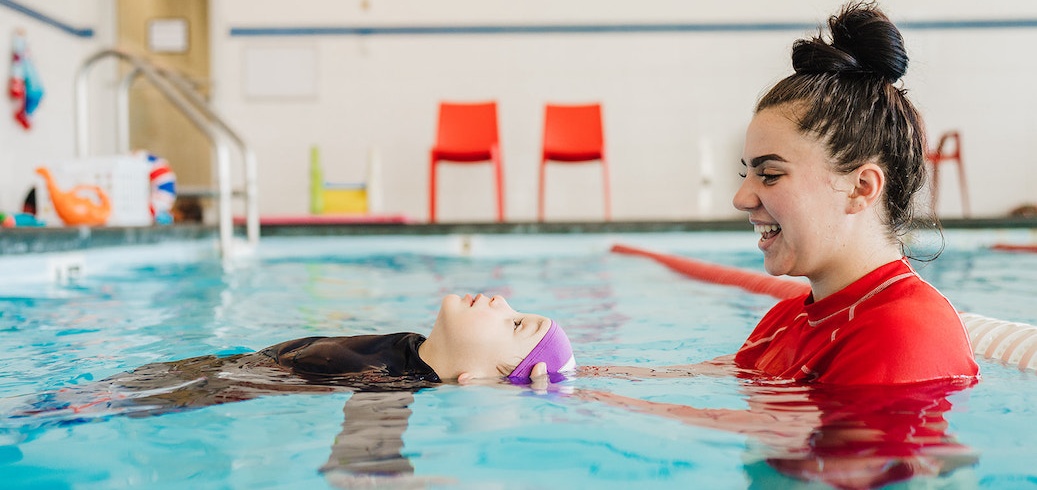
Flotation aids (puddle jumpers, water wings, or any inflatable toy or support) remain popular, and parents provide them to their children as flotation devices with the belief that they will provide safety/security. However, they can actually do more harm than good when the goal is to keep children safer in and around the water. In a press release on water safety and drowning prevention, the CDC instructed parents: “Do NOT use air-filled swimming aids (such as ‘water wings’) in place of life jackets or life preservers with children. These can give parents and children a false sense of security and increase the risk of drowning.”
Continue reading for more specific information so that you can make an informed decision and keep your swimmers safer in the water:
Can cause a false sense of security
How? When swimmers are first learning, it’s important that they learn to be in the water without wearing floaties that tend to keep their bodies in a vertical position. Flotation aids tend to teach children that even without their parents, they will remain on top of the water. What they may not understand is that without these, they will not stay afloat. We want to avoid drawing a connection between constant support in the water and presumed safety. With any type of flotation aid, supervision must be consistently provided.
Outsized confidence
If children are only familiar with the feeling of having a “floatie,” they may believe that they are stronger, faster, and better “swimmers” than they actually are. This may lead to increased confidence with or without the floaties. These devices will make them feel independent when in reality they are not. For the purpose of drowning prevention, the focus should be to encourage water exploration only with assistance from someone experienced enough to instill respect for the water without inciting fear.
They don’t teach kids to float
Flotation devices are great for having fun in the pool and useful in water emergencies, but they do not teach anyone how to float – the most important water survival skill. Most “floaties” keep swimmers in a vertical position, which is not a natural swimming position. It can also cause people to sink faster and hinder their ability to get back to the surface. Learning to swim in a horizontal position is key, and the best way to do that is by having your swimmer enrolled in a survival swim school to teach balance, body positioning, and proper swim skills for safety.
Prone to slipping and breaking
Water wings, floaties, and other inflatables are made of thin plastic and prone to popping or deflating, and are often very slippery. When a swimmer has little-to-no experience and an issue with one of these products arises, it will cause panic. This counters a major key to floating–staying calm and relaxed in the water.
Final thoughts
Flotation devices should not be used as a part of teaching anyone to swim. Instead, safety experts encourage parents to enroll their children in formal swimming lessons with highly trained instructors.
While we do acknowledge that realistically, caretakers may sometimes choose to utilize “floaties” to provide a level of fun in the water, they should still always be within reach of their inexperienced child and someone’s eyes should be on the water at all times.
British Swim School is the premier learn-to-swim provider for people of all ages, offering programs for children ages 3-months through adults. We use gentle teaching methods and a survival-first approach to help people of all experience levels become safer, stronger swimmers–without causing unsafe reliance on flotation. British Swim School’s safe, fun, and effective instructional program has made it the preferred choice for parents and students for over 40 years.





